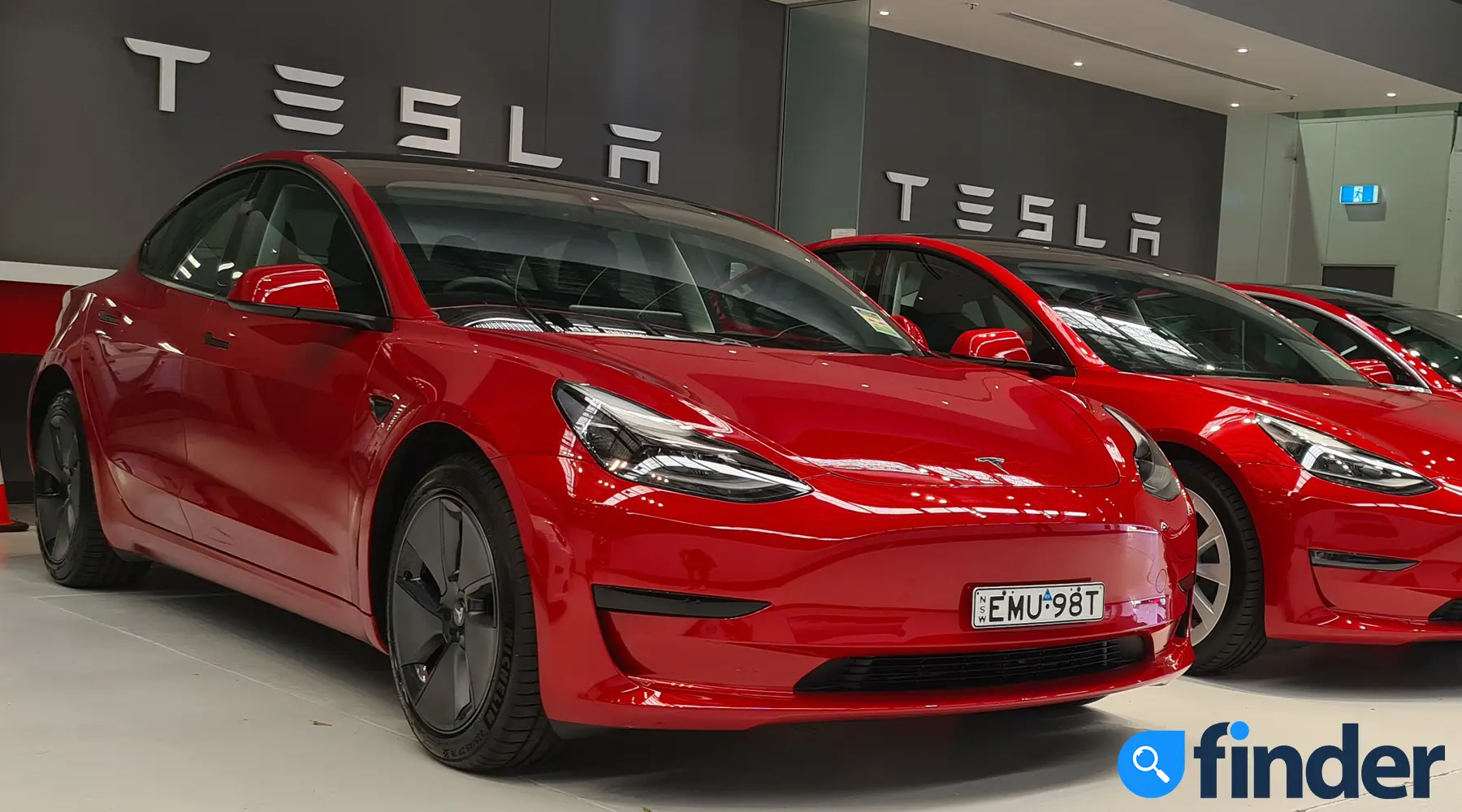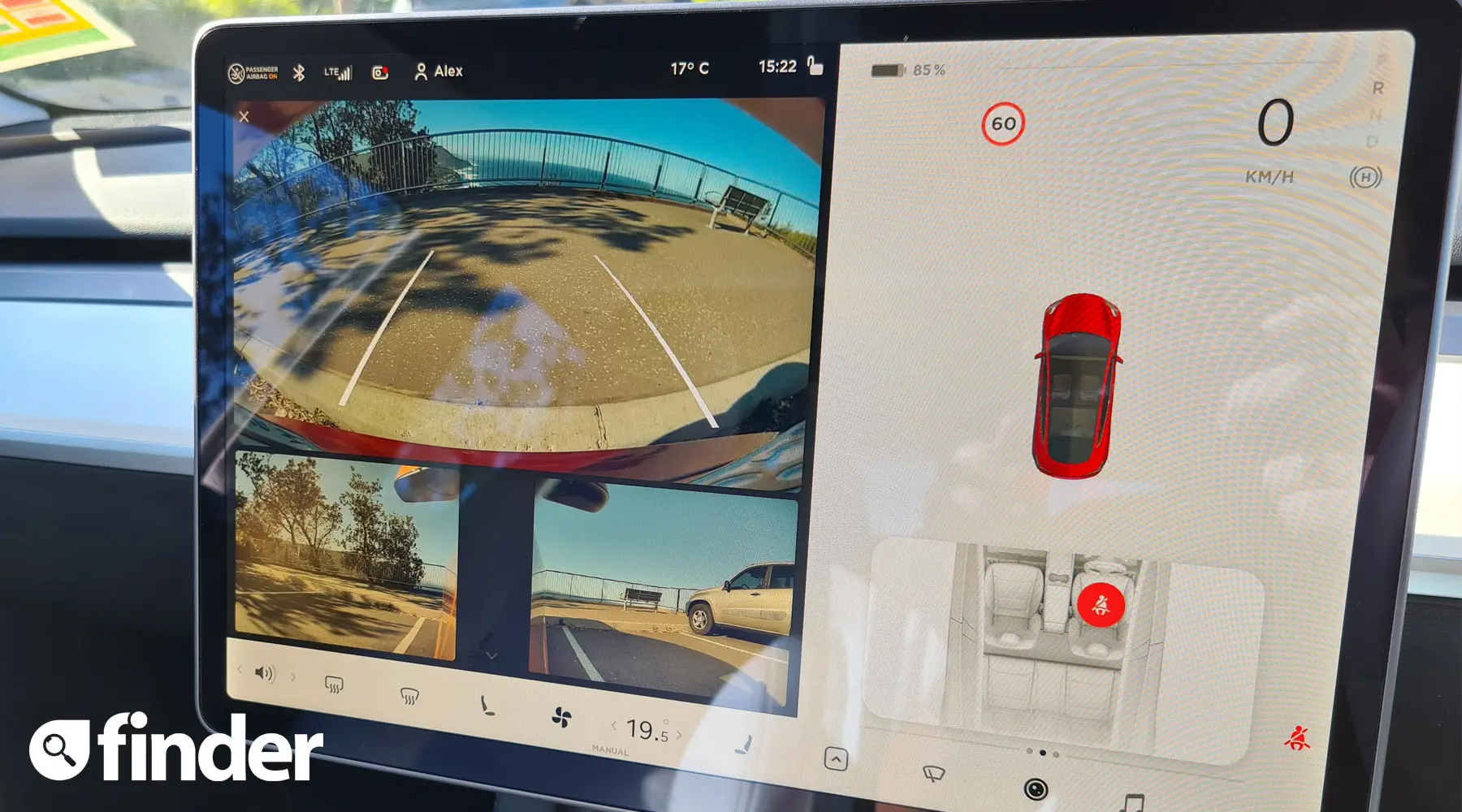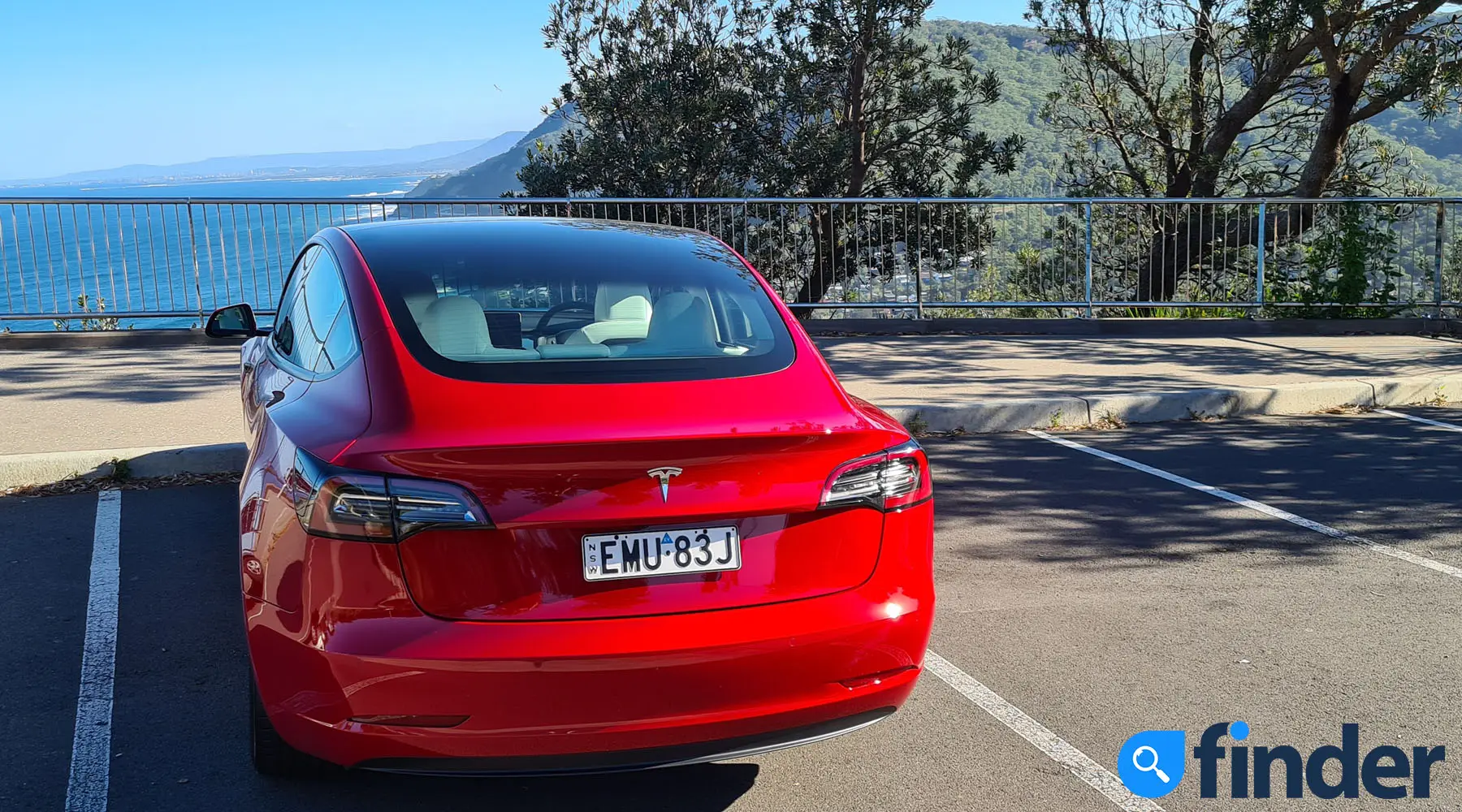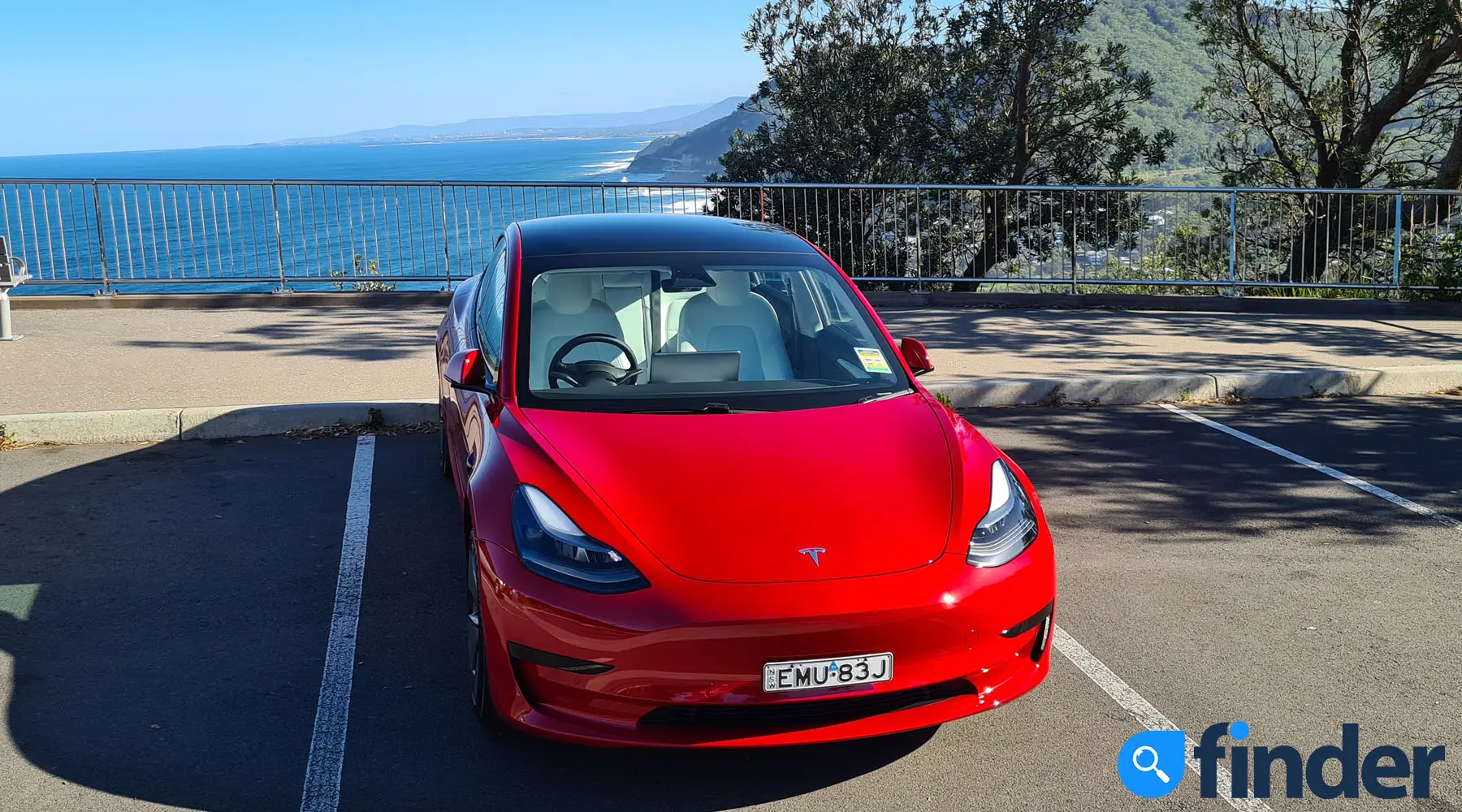The Tesla Model 3 was a long time in the making. It was thought that its launch would make electric cars available to the masses, but a number of hiccups along the way saw production fall behind.
Part of the delay was due to Tesla Technoking Elon Musk’s attention to detail, ensuring that the Model 3 was the best it could be for customers. From performance to functionality, Musk had a hand in it all.
Despite some quirky moments, the entrepreneur’s dedication to the cause has really accelerated the adoption of electric vehicles and forced larger, more established companies to keep up.

For testing, we have the entry-level Tesla Model 3 Standard Range Plus, Tesla’s affordable electric vehicle for the masses. It starts at $66,900 before on-road costs, but with those factored in and a few options checked on the spec sheet, the one we reviewed would cost $76,616 to drive out of the showroom.
That is a significant amount of money. Is it justified?
Model 3 range pricing
Model 3 Standard Range Plus | 448km | $66,900 | 5.6 seconds |
Model 3 Long Range | 580km | $81,900 | 4.4 seconds |
Model 3 Performance | 567km | $93,900 | 3.3 seconds |
What’s it like inside?
There are no switch gears, knobs, dials or buttons, apart from the two on the steering wheel.
What you do get is a wheel, two pedals and a large, iPad-like, infotainment screen. You may think that would take some getting used to, I know I certainly did. But it doesn’t, which is a result of the intelligent way the vehicle has been designed.
Despite not having buttons and dials, everything is still easy to find and navigate on the large 15-inch vertical touchscreen. As mentioned, you get two buttons on the steering wheel. These are programmable and their actions can be modified based on what function you have open on the screen. The experience becomes near seamless after you get used to it.
Satellite navigation comes as standard in the Model 3 and it plans trips around known charging points and the distance you are travelling. For example, the Model 3 will say you need to stop at a certain location for 30 minutes and top up, as there is a supercharger available. A couple of hundred kilometers down the road it might suggest you stop again for an hour, depending on the charger available.

Apple CarPlay and Android Auto are omitted from the Model 3, but you don’t need them. The software that comes as standard is impressive. You also have the ability to log in to your Spotify account (among other services) and access your music directly.
Complementing the silent e-motor is a 14-speaker sound system that is supported by a subwoofer and 2 amps for crystal clear audio.
With the serious stuff out of the way, we can talk about the other features that the touchscreen infotainment system offers up. You’ve probably seen the “Romance Mode”, which turns the screen into a giant fireplace, but you can also access games like dune buggy racing, which are controlled by the vehicle's actual steering wheel and pedals!
It’s strange to get used to, but a blast to play – just don’t flick it in to drive!
Then there is the programmable whoopee cushion, which you can trigger with one of the steering wheel buttons so your passengers don’t see it coming – juvenile, but brilliant!
Moving on, you get the trademark Tesla minimalist layout inside the Model 3, which imbues the cabin with a spacious and airy feeling. The large tinted panoramic roof adds to the feeling, spanning the entire ceiling of the vehicle.
The vegan leather-wrapped seats are supremely comfortable and easy to adjust, as you'd expect with electronic adjustability for the driver and passenger. Electronic steering adjustment helps with comfort too. The front seats are also heated, which is perfect for those cold winter days.
Our Model 3 review vehicle had an optional $1,500 white interior fitted, but it isn’t the one I would go for. In fairness, it does look great, but I can’t imagine how it would look with the more rigorous use of, say, a young family (or a pet owner).
Speaking of young families, leg and headroom in the back row are good. With the driver's seat in my driving position, I comfortably fit behind it.

Build quality was a big talking point when the Model 3 was first launched. There was a lot of talk about loose parts, uneven panel gaps and, worryingly, some owners experiencing water ingress. We made a point to check the vehicle for build quality issues, but didn’t detect any. To my eye, the Model 3 is well bolted together.
Everything feels sturdy and is as it should be.
Model 3 storage
One of the more obscure benefits of the Tesla Model 3 is that there are multiple storage areas, not just the traditional boot. The boot is large enough to store 425 litres of cargo.
This is just 10 litres short of a Mercedes-Benz C 200, which uses a mild hybrid system, and 68 litres more than the Hyundai IONIQ.
Move to the front of the Model 3 and you also get a “Frunk” with a capacity of 117 litres, for a combined 542 litres. This overall capacity beats out the two vehicles mentioned above.
Both areas can be opened electronically via the large infotainment screen.
What’s it like to drive?
As mentioned, the Tesla Model 3 surprisingly doesn’t take much getting used to. The two biggest differences are that there is no speedometer behind the steering wheel and that gears are selected by a stalk on the steering column.
Regenerative braking is always on, reducing the amount of interaction you have with the brake pedal, but also topping up the battery as you drive along.
The Model 3 Standard Range Plus can travel 448km on one charge, according the the WTLP testing standards. During our time with the Model 3, though, we estimated real world range to be a bit less than that, perhaps settling around the 300-350km mark. Most vehicles seem to fall short of their laboratory tested numbers though, and that’s true for petrol and diesel too.
If you consider that the average daily commute in Australia is 16km each way, with a range of 300km, the Model 3 has more than enough range for a week. If, however, your commute is a bit longer than that, you simply plug it in overnight and it will be topped up when you head off in the morning.

This was one of my favourite things about the Model 3. You don’t have to plan your trip around getting fuel. There’s no need to leave 15 minutes earlier, or go an alternate route to stop at a petrol station. Every morning you wake up with a full charge and 300kms of range.
In terms of performance, Tesla states that the Model 3 Standard Range Plus will do the dash to 100km/h in a brisk 5.6 seconds, with power being sent through the rear wheels. For reference, this is about on par with vehicles like the EcoBoost Ford Mustang and the Ford Focus ST.
If you are after a bit more performance, the Model 3 Long Range will launch you to 100km/h in 4.4 seconds, while the Model 3 Performance will catapult you there in 3.3 seconds – that’s firmly into supercar territory.
The ride comfort of the Model 3 is on the firmer side. It isn’t bone-jarringly bad by any means, but the odd rough patch of road can catch it out. Day to day (and as you get used to the vehicle), you’ll find yourself noticing it less and enjoying the directness of the steering more. Plus, those plush seats help to absorb some of it.
Our tester wasn’t fitted with autopilot (an $8,500 option), but the autosteer function – which is Tesla’s equivalent of Lane Keep Assist – works incredibly well. Not only does the function steer the car incredibly smoothly, but the radars pick up vehicles, bins, witch’s hats and anything else that litters the sides of the road (or other lanes), displaying them on the 15-inch touchscreen.
In terms of technology, it is almost unparalleled.
How safe is the Model 3?
It’s incredibly safe. We have already touched on the autosteer function, but the really brilliant thing is how accurate and smart the radar system is. It really was picking up bins and witch’s hats, recognising them and displaying them on the screen.
Outside of this though, it scores a 5-star ANCAP safety rating, gets 6 airbags and has 2 ISOfix mounting points for capsules, as well as 3 top-tether points.
Then there’s the techy stuff. The driving aids include:
- Autonomous Emergency Braking (AEB)
- Blind Spot Monitoring
- Lane Departure Warning
- Adaptive Cruise Control
- Lane Keep Assist
- 360-degree vision (8 cameras around the vehicle)

Model 3 servicing
Unlike traditional internal combustion vehicles, electric cars like the Tesla Model 3 require less maintenance. The Model 3 doesn’t have a servicing plan for the simple reason that it doesn’t need much servicing and will only need a handful of components checked at certain times.
Model 3 warranty
Tesla provides a 4-year/80,000km warranty on the Model 3 and, more specifically, a 8-year/160,000km battery and drive train warranty.
The verdict
When you look at the current crop of electric vehicles on the market in Australia, the Tesla Model 3 is arguably the yard stick, not just in terms of popularity, but performance and importantly, range.
At $66,990, it isn’t cheap. However, if you aren’t regularly travelling long distances, the Standard Range Plus probably makes the most sense, on paper at least, given the $15,000 jump to the Model 3 Long Range.
We can’t definitively make that call without having driven it though. Review to follow.
You could also consider
Want to read more car reviews? Check out our car reviews section or follow us on instagram!
More guides on Finder Shopping
-
Hyundai Ioniq 5 N Review
The future’s electric – and it wants to burn rubber
-
2025 Genesis G70 Review
It's faster than a BMW 3 Series, more unique than a Mercedes C-Class and loaded with features that make it feel every bit as premium.
-
Volkswagen Golf Mk8.5: More tech, more power, more excuses to upgrade?
The VW Golf is back - and it's got more of everything.
-
Sharper, smarter and better value: The 2025 Skoda Octavia RS lands in Australia
Skoda refines its family-friendly performance car with more features, more power and a competitive price.
-
2024 Peugeot E-Expert Van Review
Peugeot have made a van that whispers while it works.
-
2024 Toyota GR Corolla review
Toyota gave a Corolla muscles and a megaphone and it’s glorious.
-
2024 Jeep Wrangler Review
Born for the trail, adapted for the tarmac
-
SUV reviews
Let us assist you in picking your next SUV.
-
Best small cars
There are dozens of different makes and models to choose from and then about five different trim levels on average, per carmaker. This guide will help you cut through the sales banter.
-
Electric Car Reviews 2025
Which electric car should you buy in 2021? Find out with our complete EV guide.
